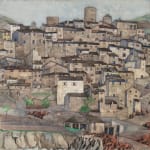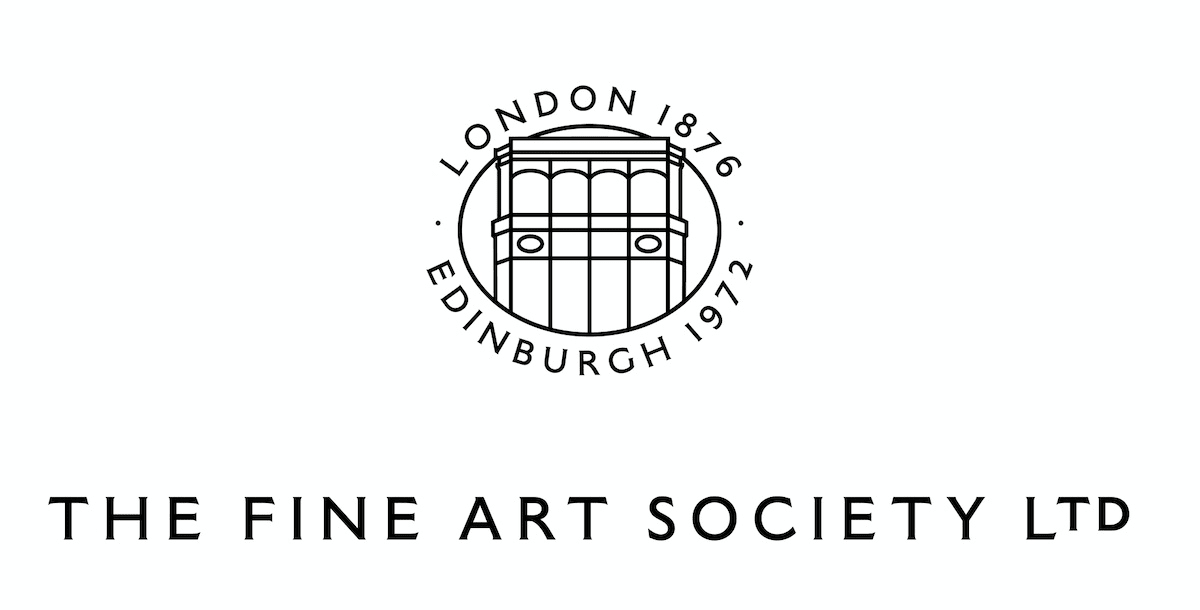


Charles Rennie Mackintosh 1868-1928
Further images
This is almost certainly when he painted Palalda, Pyrénées-Orientales and, possibly, the view of the farmhouse at Mont Alba. The village of Palalda cascaded down the hillside and Mackintosh took a distant viewpoint from across the Tech, looking up towards the village. In fact, the painting is a combination of views from several separate points and Mackintosh was obviously feeling confident enough, after a year in France, to make these painterly decisions rather than produce a straightforward topographical view. He even went as far as carefully cutting out pieces of paper to stick over some of the houses to change or re-arrange aspects of the composition. The hillside behind the town is omitted completely – a view only possible from the riverside – and the red tile roofs of the houses have been changed to grey and black, perhaps to suit the cold light of the winter’s day when Mackintosh was working here. These are sophisticated decisions, actions of an artist, not those of an architect making notes in a sketchbook. In this painting Mackintosh crosses the divide between artist and tourist, immersing himself in his subject, taking control of it.
Roger Billcliffe said:
Palalda, Pyrenées-Orientales, (watercolour on paper, 51.5 x 51.5 cms) Is undoubtedly the the most successful of his early watercolours painted in France, following a couple of more hesitant compositions. Margaret Macdonald, writing to Jessie Newbery from Amélie-les-Bains on 18 December 1924, describes Mackintosh busy painting in the Pyrenean sunshine, “happy as a sand boy" . This painting is where he settled many of the ideas which underpinned later watercolours, experimenting with changing local colour (the re-tiled roofs became grey) and with changes to his compositions, here realigning different features of the houses to reinforce or emphasise the composition. He even fixed a small piece of paper over part of the painting so that he could add different features to enhance the design.
Like Héré de Mallet, this painting was bought from the 1933 Memorial Exhibition by William Davidson, one of Mackintosh’s earliest supporters who had an excellent eye for the post-1914 watercolours and bought many of the best flower paintings and French landscapes, having first choice after Margaret’s death in 1933.
(Roger Billcliffe for The Fine Art Society, History of the New, June-July 2023)
Provenance
Purchased at Memorial Exhibition, Glasgow, 1933, by William Davidson, Windyhill, Kilmacolm, and thence by descent, on loan to the National Galleries of Scotland, Edinburgh, until 2023
Exhibitions
McLellan Galleries, Charles Rennie Mackintosh, Margaret Macdonald Mackintosh, Memorial Exhibition, Glasgow, 1933, no.74; The Empire Exhibition, Glasgow, 1938, no.219; Kelvingrove Art Gallery and Museum, Mackintosh Watercolours, Glasgow, 1978-1979, no.200; The Fine Art Society, Charles Rennie Mackintosh Memorial Exhibition: A Reconstruction, Glasgow, 1983, no.74; National Galleries of Scotland, Charles Rennie Mackintosh in France, Edinburgh, 2005, no.1
Literature
Roger Billcliffe, Mackintosh Watercolours (London, 1977) pg.44, ill. pg.134, no.200; Pamela Robertson & Philip Long, Charles Rennie Mackintosh in France (Edinburgh, 2005) ill. pp.32-33, plate 1Join our mailing list
* denotes required fields
We will process the personal data you have supplied to communicate with you in accordance with our Privacy Policy. You can unsubscribe or change your preferences at any time by clicking the link in our emails.



